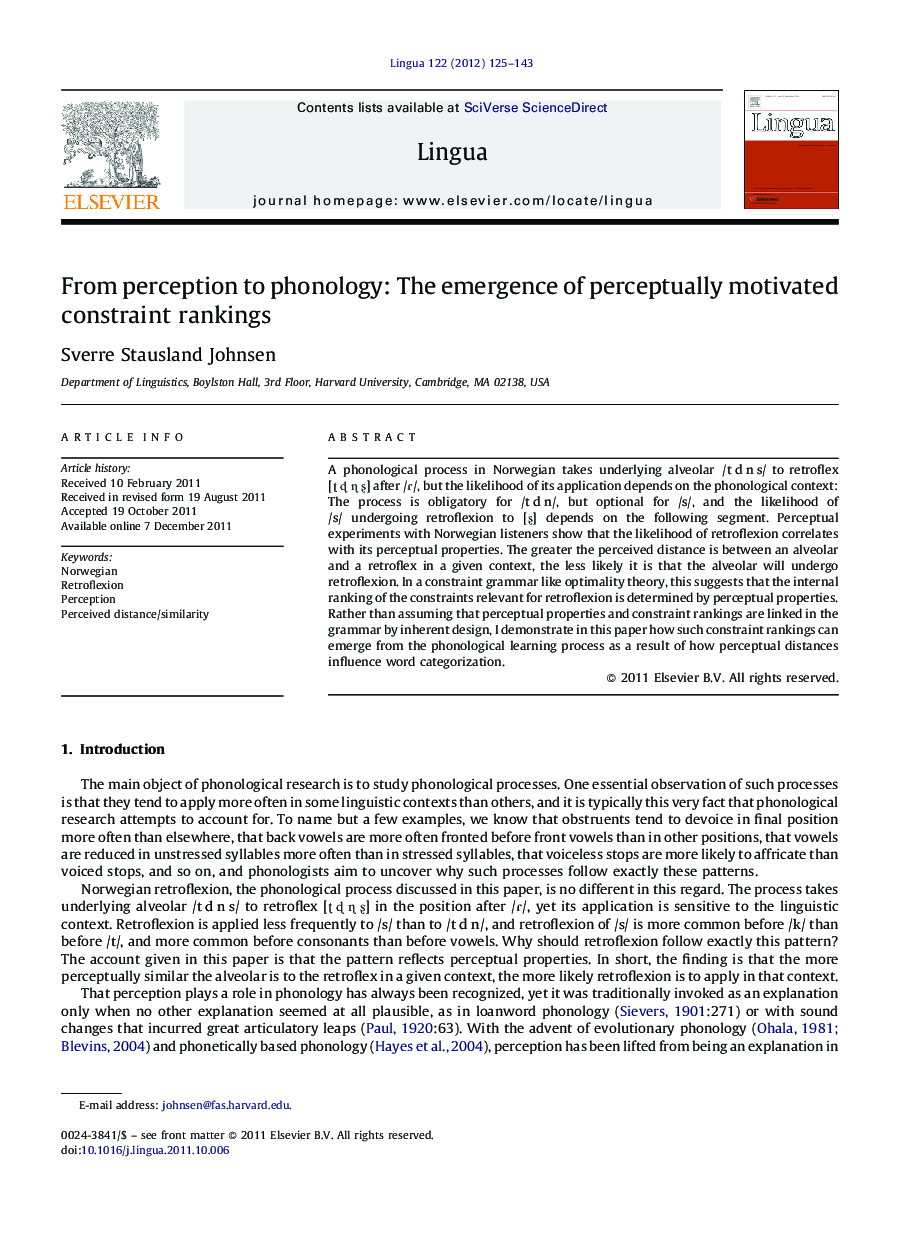| Article ID | Journal | Published Year | Pages | File Type |
|---|---|---|---|---|
| 935903 | Lingua | 2012 | 19 Pages |
A phonological process in Norwegian takes underlying alveolar /t d n s/ to retroflex [ʈ ɖ ɳ ʂ] after /ɾ/, but the likelihood of its application depends on the phonological context: The process is obligatory for /t d n/, but optional for /s/, and the likelihood of /s/ undergoing retroflexion to [ʂ] depends on the following segment. Perceptual experiments with Norwegian listeners show that the likelihood of retroflexion correlates with its perceptual properties. The greater the perceived distance is between an alveolar and a retroflex in a given context, the less likely it is that the alveolar will undergo retroflexion. In a constraint grammar like optimality theory, this suggests that the internal ranking of the constraints relevant for retroflexion is determined by perceptual properties. Rather than assuming that perceptual properties and constraint rankings are linked in the grammar by inherent design, I demonstrate in this paper how such constraint rankings can emerge from the phonological learning process as a result of how perceptual distances influence word categorization.
► The likelihood of retroflexion in Norwegian is determined by perceptual properties. ► The ranking of correspondence constraints is there-fore derived from these properties. ► This ranking has emerged from the grammar learning procedure.
